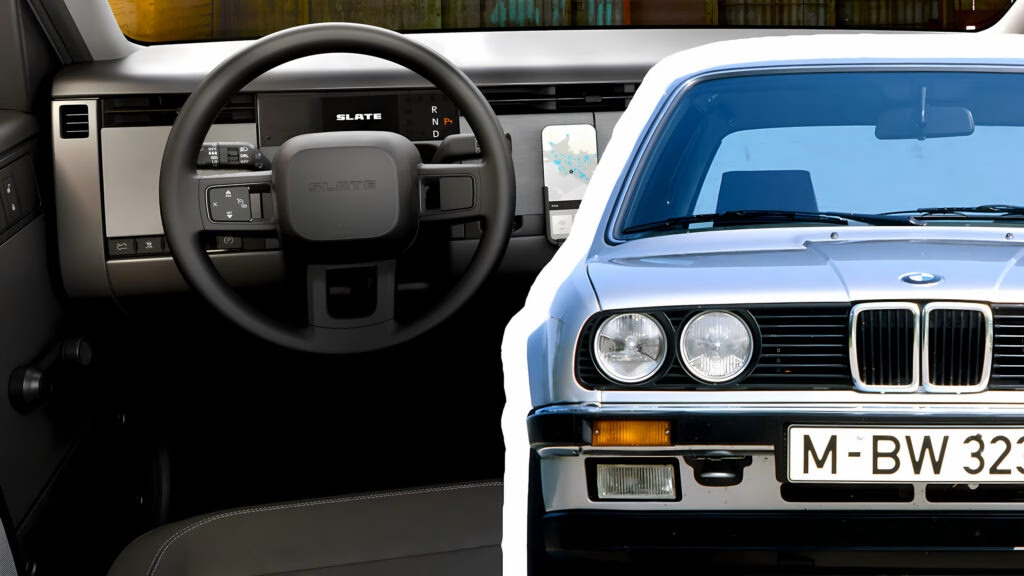Could Slate’s No-Frills Truck Spark a Minimalist Revolution in the Auto Industry?
Marie Kondo’s 2019 Netflix series, *Tidying Up*, encouraged many of us to reevaluate the clutter in our lives, leading to a wave of decluttering and minimalism. Fast forward to today, and it seems that Slate is taking a similar approach with their new electric truck. Could this ultra-basic vehicle inspire a shift in how we think about cars and their features?
What’s the Deal with Slate’s Electric Truck?
Slate is on a mission to strip away the unnecessary bells and whistles that have become standard in modern vehicles. Think about it: how many of us really need color-changing LED lights or a complex touchscreen interface? Slate’s electric truck promises to deliver essential functional and safety features without the fluff. In its standard form, it comes with no radio, no speakers, and even manual windows—yes, you read that right.
While many automakers pack their vehicles with gadgets, Slate is betting that consumers might appreciate a more straightforward approach. By offering a bare-bones option, they aim to keep the starting price around $28,000, which could drop to about $20,000 with potential tax credits. This pricing strategy could resonate with budget-conscious buyers looking for a reliable vehicle without the extra costs associated with high-tech features.
Do We Really Need All Those Amenities?
This minimalist philosophy raises an interesting question: do we really need all those amenities that come standard in most cars today? Take the Ford Maverick XL, for example. Priced at around $24,000, it still includes air conditioning, power locks, Bluetooth, and an 8-inch touchscreen. While these features are nice, they might not be essential for everyone.
In Europe, Dacia has successfully tapped into the low-cost, low-content market, with models like the Sandero becoming best-sellers. This trend suggests that there’s a demand for simpler vehicles, especially in markets where affordability is a priority. With Slate’s truck, the idea of a no-frills vehicle is gaining traction in the U.S., where consumers are starting to question the necessity of excessive features.
Should Other Automakers Follow Suit?
The question now is whether other automakers should consider adopting a similar strategy. Imagine a world where you could choose a vehicle that meets your basic needs without the extra gadgets that often drive up the price. Could this lead to a more sustainable approach to car ownership, where consumers are less burdened by debt and more focused on functionality?
Historically, cars were simpler. In the 1980s and 1990s, it was common for manufacturers to offer basic trims with fewer features. Today, however, many automakers seem to believe that consumers expect a certain level of luxury, even in entry-level models. But is that true? Would you be willing to forgo some of the Maverick XL’s features if it meant a significant price reduction?
Reflecting on the Past: Remember When Mirrors Were Optional?
It’s fascinating to think about how far we’ve come in terms of automotive features. There was a time when even luxury vehicles like the BMW 7-Series could be sold with minimal options—think manual transmissions, cloth seats, and just one mirror. Nowadays, the baseline expectation seems to include a plethora of tech features, even in the most affordable models.
This shift raises an important point: are we actually more comfortable with a cluttered car experience? Or are we just accustomed to it? If automakers like Slate can successfully market a no-frills vehicle, it might just encourage others to rethink their offerings.
The Big Picture: A Shift Toward Simplicity?
As we ponder the future of the automotive industry, it’s clear that there’s a growing appetite for simplicity. Whether it’s through Slate’s innovative approach or a broader trend toward minimalism, consumers are beginning to question the necessity of excessive features.
So, what’s the takeaway? The big takeaway? Embracing simplicity in our vehicles isn’t about perfection—it’s about making smarter choices. If you’re feeling overwhelmed by all the options, consider what you truly need in a vehicle. Start with one change this week, and you’ll likely spot the difference by month’s end.

